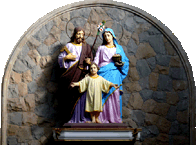|
This small to medium sized deciduous tree is a popular ornamental avenue tree.
It has large compound leaves, with oval leaflets, which have a smooth upper surface with veins more visible on the underside. The young leaves are flourescent green.
The tree is a cynosure of all eyes when in bloom - clusters of golden yellow flowers dangle from the branches and delicate petals shower the ground below. These vibrant yellow flowers are often referred to as 'golden showers'.
The fruit is a long, cylindrical, pipe-like pod which is green when young, but dark coffee brown when ripe. Since monkeys relish these pods, the tree is also called the 'Monkey Stick' tree.
The wood is hard and is used for a variety of wood work. The pulp of the fruit is used in many Ayurvedic medicines as a laxative and in heart disease, and its paste is applied to cure gout and rheumatism. The leaves are eaten by tribals. The leaves are also larval food plant of the Common Emigrant butterfly.
The name 'Byculla' in South Mumbai, is derived from the tree's common name 'Bahava', as many of these trees were found there in the past. The Laburnum Road at Gamdevi also boasted of an avenue of these trees, but sadly no longer seen.
A postal stamp was issued by the Indian Postal Department to commemorate this tree.
IMPORTANT: The information on this website has been compiled from reliable sources, such as reference books. It is not a substitute for medical advice or treatment. Readers should always consult their physician before using or consuming a plant for medicinal purposes.
--- Click here for information about other trees on Holy Family Church campus ---
|
